Just south of the island of Sicily is the archipelago of Malta. Technically Malta consists of multiple islands one of which includes the island of Malta, though the entire archipelago is still considered “Malta”. Although the island isn’t particularly big, the small space is steeped in history dating back to at least the Neolithic era and there are many fun things to do in Malta. In fact, Malta is home to some of the best archeological evidence of Neolithic living and has some of the world’s most ancient standing buildings. Its strategic location between Europe and Africa along with its good harbors has made it one of the most important locations for just about every empire that came through here. The Phoenicians, Greeks, Romans, Arabs, Normans, Crusaders, the French, and British all conquered and claimed Malta and it only gained its independence in 1964. Suffice it to say, the island is quite the mashup of histories, empires, and cultures.
In 1565, the Ottoman Empire tried to take the island, and the small garrison of 8,000 Knights of Malta withstood and eventually repelled the siege after a few months. The result of this event led to the building of Malta’s biggest city, Valletta which was fortified with massive stone walls. These defenses would prove useful again during World War Two when the Nazis tried to bomb the city.
The culture and art of Malta reflect its past and its geography. Taking cues from neighboring Mediterranean states as well as the various cultures that have all left their mark on this unique European state. However, despite all the marks left on Malta by other nations, the small island has still to this day retained a lot of its own culture especially through its music, art, and especially its festivals. If you find yourself on this beautiful island, check out some of these amazing things to do in Malta.
Valletta
Valletta is the island nation’s capital and its narrow winding streets, 16th-century architecture, make the entire city center a designated UNESCO World Heritage Site. The city center has a lot of one-way streets and pedestrian-only zones so the best way to get around is definitely by foot. Wear comfortable walking shoes because the city is built on a ridge and staircases to get around the city’s higher points are easier to do if you’re wearing good shoes.
St. John’s Co Cathedral: Dedicated to St. John, St. John’s Co Cathedral is one of the most iconic landmarks in the city and the country. It was built by the Order of Saint John between 1572 and 1577 with the interior being considered as one of the finest examples of High Baroque architecture. The interior decoration was designed to rival Rome and once inside, you’ll be blown away by the extremely ornate style which stands in stark contrast to the unassuming facade. Intricately carved stone walls, vaulted ceilings, and more gold than you’ve probably ever seen elsewhere. While it is easy to be dazzled by the shimmer and shine of all the gold and works of art in the church, take a moment to look down at the floor. The floor of the cathedral is adorned with artworks of skeletons which represents the almost 400 knights who died defending the island when it was being besieged by the Ottomans.
The Blue Grotto: Like a lot of southern European countries and regions in the Mediterranean, Malta can get pretty hot in the sun. Located a short boat ride away from the central Valletta area, the Blue Grotto is a beautiful way to cool off while also enjoying the gorgeous sights around the island. The name “Blue Grotto” is dubbed so because, during the morning and early afternoon hours, the reflection of the sun illuminates the cave and makes the colors of the water a spectacular azure blue.
Explore the Underground Tunnels: Kingdoms have long established that the strategic importance of Malta means that if you can control the island, you can control much of the Mediterranean. During the Great Siege of 1565, as part of the island’s defense, the Knights of Malta dug underground tunnels to safely get from one place to another. While the Knights of Malta were dispelled by Napoleon’s forces in 1798, the underground tunnels would again be important for the survival of Malta. During WWII the tunnels acted as a bomb shelter for locals and British military commanders as the Axis bombed it over 3,000 times. Despite that, Malta held on and the Allies remained to defend the Mediterranean. Now the tunnels make up an interesting part of Malta’s history and are open for public access.
Lascaris War Rooms: What was once slave quarters during the Knights of Malta era became one of the most important places for the defense of Malta during WWII. The Lascaris War Rooms operated for both defending the island and also for directing operations around the Mediterranean such as the invasion of Sicily. Today the war rooms are a museum and have been refurbished to look like they did in the 1940s. Above ground is the saluting Battery where cannons are fired every day at noon.
Casa Rocca Piccola: If your family home was over 200 years old, you’d probably want to show it off too. The Casa Rocca Piccola is a unique place in Valletta as it essentially encompasses the history of the island dating back to the 16th century. The house is the ancestral home of the Di Pirro family who is currently headed by Nicholas Di Piro, a Marquis, and a Baron. What makes the place interesting is that it is essentially a mashup of styles and decor ranging from Palladium to Art Nouveau and has a cistern that was converted into a bomb shelter. Not only does the palace have a range of architectural styles but it also has a wide array of furniture and decorative arts. Over the centuries the family has collected Gothic, Florentine, and Modern Art. Traditional Maltese furniture sits under centuries-old family portraits and pre-Raphaelite paintings. The home is essentially a museum dedicated to the last 400 years of Maltese history. When the Marquis himself is in, his personal stories and commentaries make the tour a truly unique experience.
Just Explore: Valletta is a walking city and the narrow old streets, little squares, and public spaces are something that makes Valletta interesting. Walk along the sea or head out to the harbor and just watch the water. Street vendors selling food are pretty ubiquitous or if you’d prefer, grab a seat at a café, order an espresso and watch the world go by. Valletta is a UNESCO World Heritage Site so simply taking in the sights and sounds of the streets is an experience in itself.
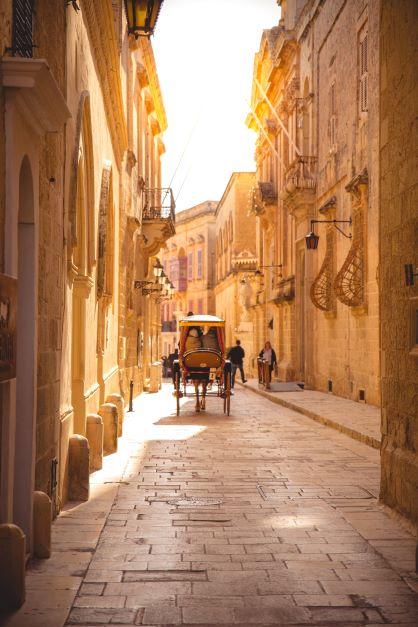
One of the attractions of the small town of Mdina is that it looks barely touched in centuries.
Walk Across the Old Capital of Mdina
Pronounced like “em-dee-nah”, the very small town of Mdina was the first capital city of Malta. Using the term “city” is a bit of a misnomer considering that it takes about ten minutes to walk from one end of it to the other. Originally it was the Phoenicians who built the area then it was later fortified by the Romans and as such, it is one of the few places around that can claim a heritage of over 3000 years. Much of the Maltese aristocracy lived within the walls of the city (and some still do today). During the era of the Knights of Malta and later the British, the importance of the city waned and the capital moved to Valletta.
Today around only 400 people live here. Cars and vehicles are essentially banned in the streets, but they are far too narrow regardless to want to drive through. A large appeal of Mdina is that it barely looks like it has changed in centuries. The random maze-like alleys, brick and stone buildings, and narrow passages make walking around the old capital a treat for the eyes. Mdina also has interesting museums, cathedrals, and a Roman Villa worth checking out too.
Spend a day at the Beach
With its hot climate and Mediterranean sunshine, there is no better way to spend a day than at the beach. Luckily around Malta, there are a few hot spots for working on your tan and cooling off after an afternoon of walking and exploration.
Golden Bay: With a name like this you better believe that it is something special. Golden Bay is easily one of Malta’s biggest beach destinations and with sandy shores and towering cliffs, it’s not just a beach, it’s a visual experience too. The stunning scenery here is only second to soft sand and calm waters. Not only that but the sunsets here are probably the best in the entire country.
Mellieha Bay: Also known as Ghadira Bay, Mellieha Bay is a popular destination in the northern part of the island. With its Blue Flag status and gentle shallow waters, it is a prime destination for people looking to relax and is ideal for families with kids. It’s also a great spot for people into watersports like jet skiing, kayaking, snorkeling, and more.
St Peter’s Pool: Offering a little less of a classic “beach” experience and but still a great time swimming, St Peter’s Pool is located in the Marsaxlokk area. The space is described as a “natural” swimming pool that often attracts younger crowds diving into the blue waters from the cliffs above. If jumping off high ledges aren’t for you, there are plenty of flat surfaces to hop into the pool. Enjoy the scenery and the gorgeous aqua waters.
Explore the Empty Island of Comino
Located between the islands of Gozo and Malta, Comino has a population of 3 people. The island in the modern era is a nature preserve and bird sanctuary though as early as the Roman Era, it was mostly inhabited by farmers even during that time, it was sparsely populated. The landscape is mostly characterized by jagged limestone cliffs and deep caves which made it a great hiding spot for pirates in the middle ages.
Now the island is a popular destination for hikers and day-trippers. Despite its cliffy shores, there are several excellent sandy beaches which are also pretty quiet and usually devoid of large crowds. The Blue Lagoon is the most popular spot offering amazing snorkeling amongst the marine life in the cyan waters. The ferry ride to the island is a picturesque trip and there is a hotel and bungalows to rent if you don’t feel like leaving too soon.
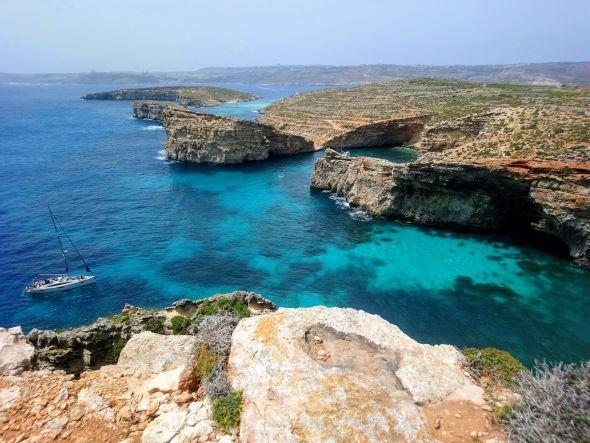
With a population of 3, Comino is a perfect place for a hike or a day-trip
Party Like a Local
Malta is still a pretty traditional place. In a world where local aristocrats still live in villas that the family has owned for over a hundred years, there tends to be a certain level of stuffiness when it comes to nightlife on the island. While alcohol is not hard to get, the nightclub culture of Europe hasn’t really taken off in Malta. But if you’re looking to let loose and live it up, Paceville has you covered. Populated by bars, clubs, nightclubs, and strip clubs, Paceville has slowly risen to become one of Europe’s hottest part destinations.
Parties and dance clubs are open until late at night drawing in youths from around the island and some wealthy party-goers from elsewhere in Europe as well. Clubs are glitzy and filled with some fun debauchery. It’s not for the faint of heart.
Our Final Word
Whether you are looking for a beach, a party or ancient history, Malta has it all. Take some time and explore the small towns and ancient villages. They really are amazing and fun.
Related Posts
I weep for America
I woke up this morning feeling a sense of doom in the world. I feel that I do not even know the country that I live in any longer. As someone that travels throughout the world and tries to make connections with the people and wildlife that I come across, it was incredible that America elected someone like Donald Trump. It is incredible that people would vote against their own best interest and seem to be happy about it. It is incredible how many racist, misogynistic and uneducated people there are in America.
Conservation Champions: 5 Exemplary Wildlife Preservation Efforts Making a Difference
Conservation Champions highlights five remarkable wildlife preservation efforts that are truly making a difference. From protecting endangered species to restoring habitats, these initiatives showcase the dedication and innovation of individuals and organizations committed to safeguarding our planet’s biodiversity. Discover the inspiring stories behind these exemplary conservation projects and the impact they have on our natural world.
Beyond the Big Five: Discovering Wildlife Wonders in Non-African Safari Destinations
“Beyond the Big Five” takes you on a thrilling journey to lesser-known safari destinations outside of Africa. From the lush rainforests of the Amazon to the vast plains of the Pantanal in South America, this article uncovers the hidden treasures of wildlife wonders that await adventurous travelers seeking a unique and unforgettable safari experience.


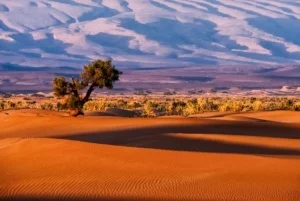
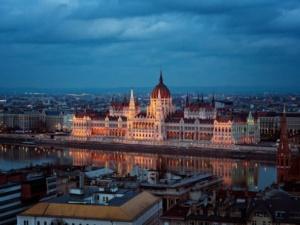
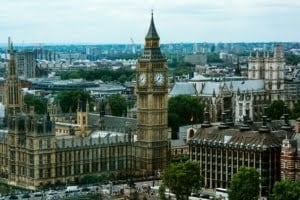






0 Comments